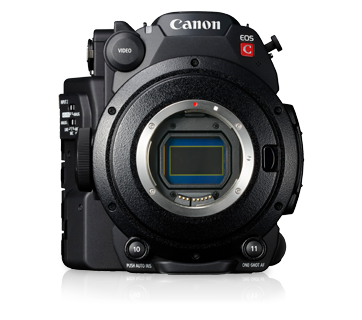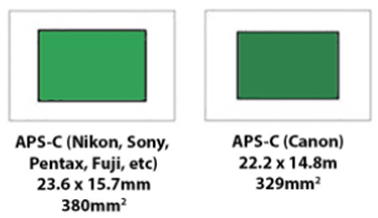When it comes to the recording formats that have been offered through the decades, we have heard about several of those options such as Kinetoscope, Cinerama, Cinemascope, Ultra Panavision 70, IMAX. But Super 35 is perhaps the most popular among them. The concept of Super 35 came up during the 80s and has been a filmmaker’s favorite for quite a long time.
For the sake of this post, we will compare Super 35 with Full-frame and will also cover the APS -C sensor format and find how do they work.
Super 35 – An Overview

Super 35 as a sensor size comes with the following features –
- Crop Factor: 1.4-1.6x
- Approximate Sensor Size: 24x14mm
- Decent Depth-of-Field
- Adequate Dynamic Range
- Good Low-Light Capabilities
The Super 35 or S35 is not a single sensor size as such. It is actually a family of sensors of different sizes and has normally been confused with APS-C sensors. Each of the camera manufacturers chooses different sensor sizes for their camera, but they do come with the same nomenclature viz Super 35.
Some good examples of different Super 35 sensors can be summarised as here below –
- ARRI Alexa has a sensor that is 4:3, 23.8 x 17.8mm
- Canon C200 has 16:9 sensor at 24.6 x 13.8 mm
- Panasonic offers EVA-1 a 4:3 sensor at 24.89 x 18.66 mm
- Blackmagic offers the sensor with 23.1 x 12.99 mm in the BMPCC 6K.

All these sensors are referred to as Super 35 sensors and thus a part of a family of sensors. While the name of the sensor specifies 35, you will find nothing in there is equivalent to 35 mm in it! That should perhaps make it one of the unique concepts and what makes it a slightly strange nomenclature.
The name has more to do with the origins that motion picture cameras have had in the good old days. The term Super 35 is specifically used for the method used for recording the imagery on a 35 mm film. The term today refers to the sensor that offers a crop factor of 1.4 to 1.6x.
Full Frame Sensor – A Sneak Peek

The features on the Full frame sensor can include –
- – Crop Factor: 1x
- – Approximate Sensor Size: 36x24mm
- – Outstanding Depth-of-Field
- – Excellent Dynamic Range
- – Superior Low-Light Capabilities
The full-frame actually refers to the size 36 x 24mm, but once again, the size should master. In principle, the full-frame sensor is actually based on the 35 mm sensor itself. If you are looking to find the differences between Super 35 and full-frame, it would be practical to understand that they are tools and not one among them has anything great or nothing wrong.
The Full Frame sensor format is designed to work with the 35 mm film, but traditionally been the larger option. The larger sensor would provide you access to more real estate. That way, you would be able to get access to an enhanced experience with an optimal pixel pitch and a greater resolution.
The Full Frame should ideally look quite familiar and comfortable. In fact, the full-frame images are akin to what we see around us, how we process the image around us.
The APS-C Sensor – The Concise Review

APS stands for Advanced Photo System. The format was introduced in 1996 but was later discontinued. The APS -C Sensor does have 16.7 x 30.2mm, but you will have three different APS digital formats viz APS-H, APS-C, and APS- P.
The APS -C sensor is considerably smaller than the original APS sensors and even the 35 mm formats. That would make these sensors quite different and smaller in size as opposed to both Full Frame and Super 35 sensors. These sensors are referred to as cropped sensors. The crop factors offered by APS-C sensors can vary between 1.3x and 2x.
The APS-C sensors can be quite effective with their smaller size and portability. Given the fact that the compactness of the sensor is most important in street photography, it can be quite practical to go with the APS-C sensors than the other 35 mm sensors such as Super 35 and Full Frame sensors. Yet another advantage you stand to gain with the APS-C sensor would be that it is quite practical in macro photography. The APS-C sensor provides you access to a higher depth of field when compared to a full-frame sensor.
The prime situations you would want to go with the sensors
Now that we have understood the premium factors and features of the three types of the sensors viz Super 35, Full-frame Sensors, and APS-C sensors, how about checking out the prime aspects of each of the situations that you would want to use these sensors.
The primary situations where we would recommend using sensors would include the following scenarios –
- Best image Quality – Full frame with a higher pixel pitch
- Street Photography – APS-C C lens. Best meant for smaller and lighter cameras
- Macro Photographs – APS-C lenses with a greater depth of field.
- Architecture and landscape – Full frame sensor with a larger field of view
- Sports and Wildlife – APS-C lenses, offering a greater reach for the better depth
- Night photography – Full frame sensors with the ability to capture more light.
- Creative flexibility – Full frame sensors with the ability to pick a narrow depth of field.
The Closing Thoughts
The APS-C and full-frame sensors are set to stay with us for a longer time to come. Super 35 sensor is perhaps a broader spectrum, and in a way includes the Full frame sensor as well. However, the wider range of camera sensors that have been in use would include Full frame sensors and APS-C sensors. Specifically designed for a few special application areas, the Full frame and APS-C sensors should definitely be what would enhance and improve your experience by several counts.
FAQs
Is APS-C the same as Super 35?
Super 35 is a family of different sensors of varying sizes. They are confused with APS-C sensors on DSLRs. The APS C sensors are different and come with several advantages such as compact size and improved depth of field.
Is full frame better than APS-C?
APS-C and Full frame sensors are not competitors and complementary to each other. You would find them offering you a different set of application performance based on your individual requirements.

